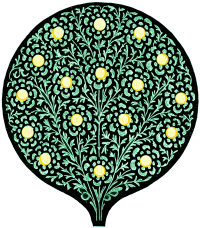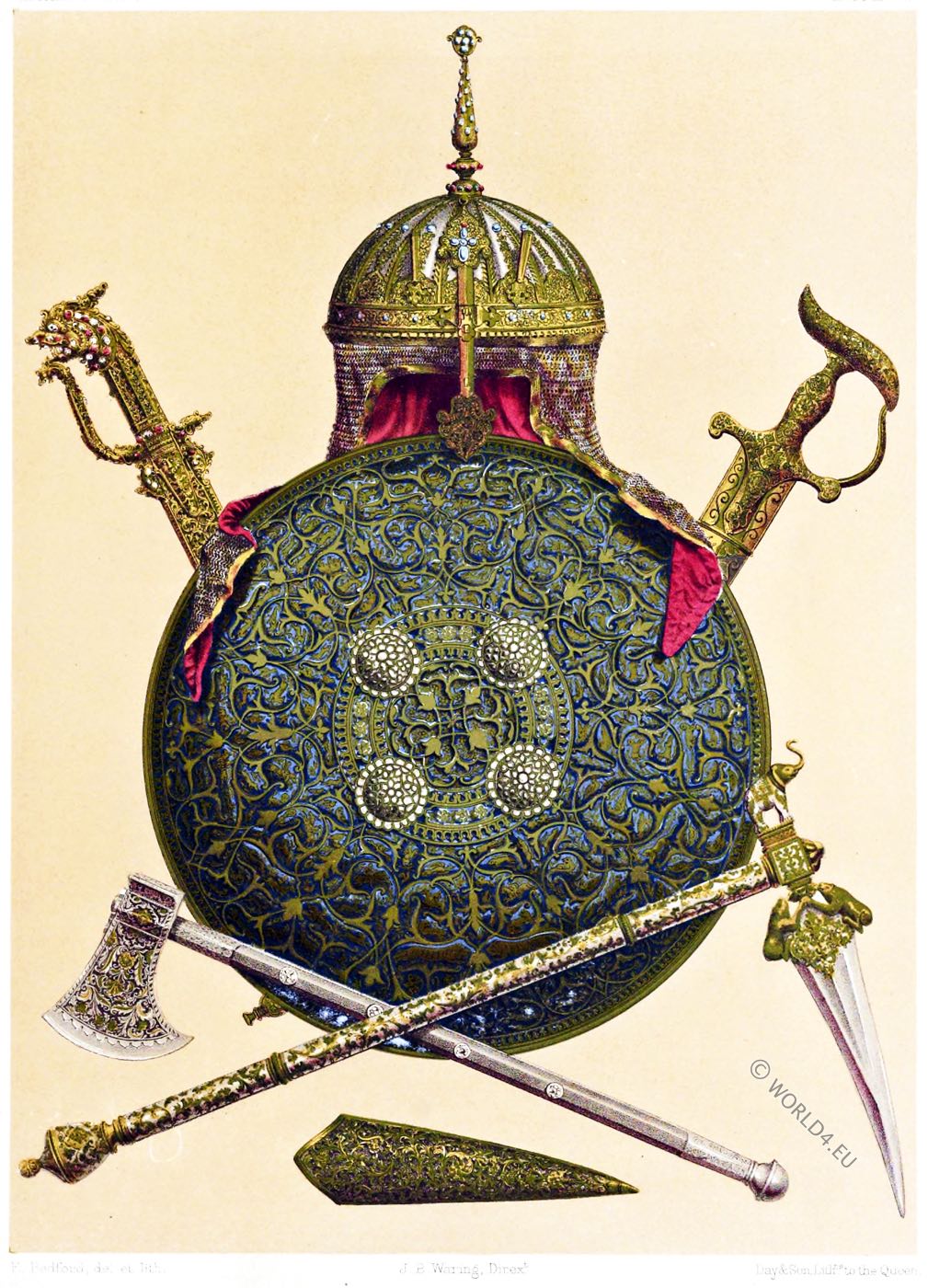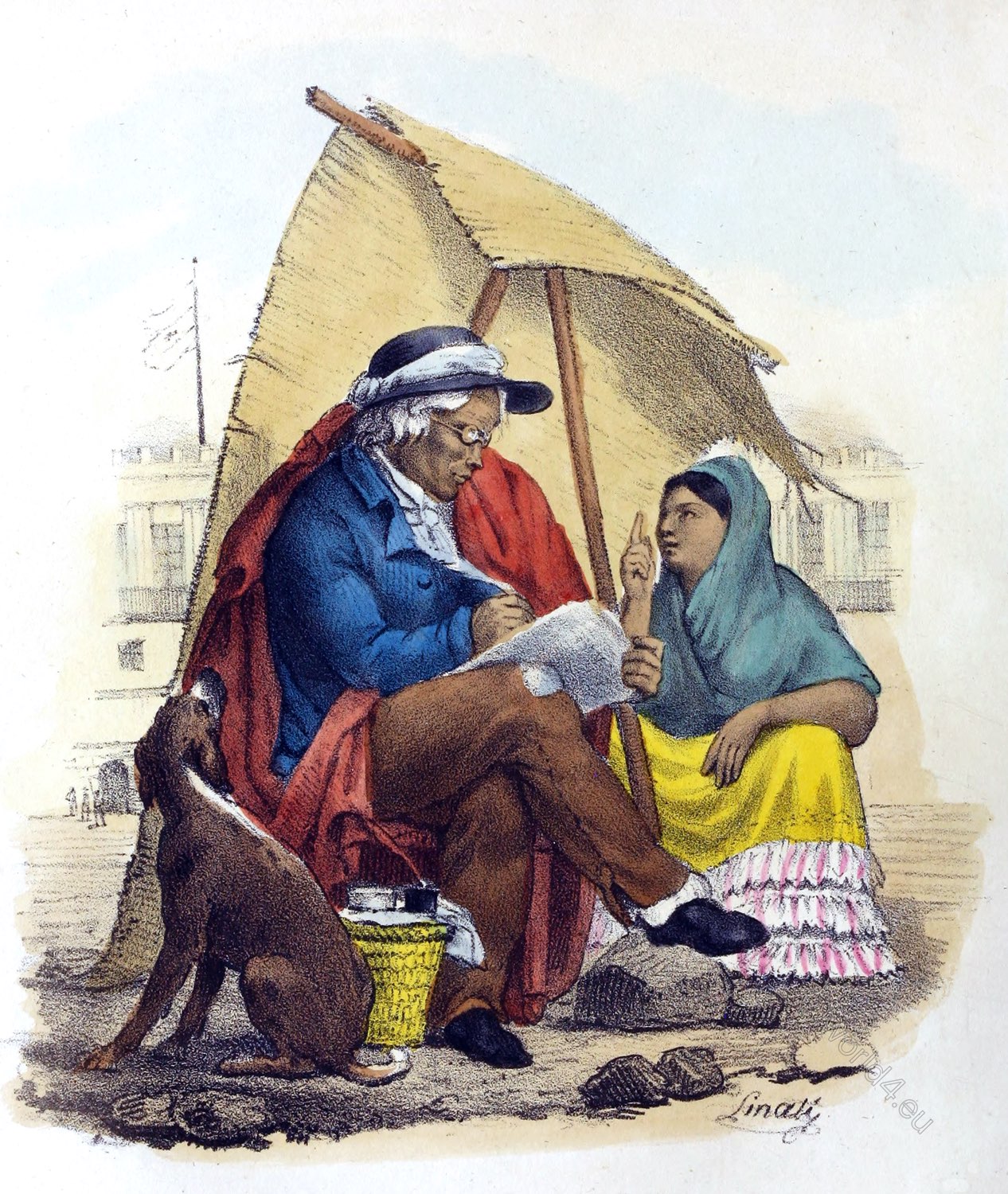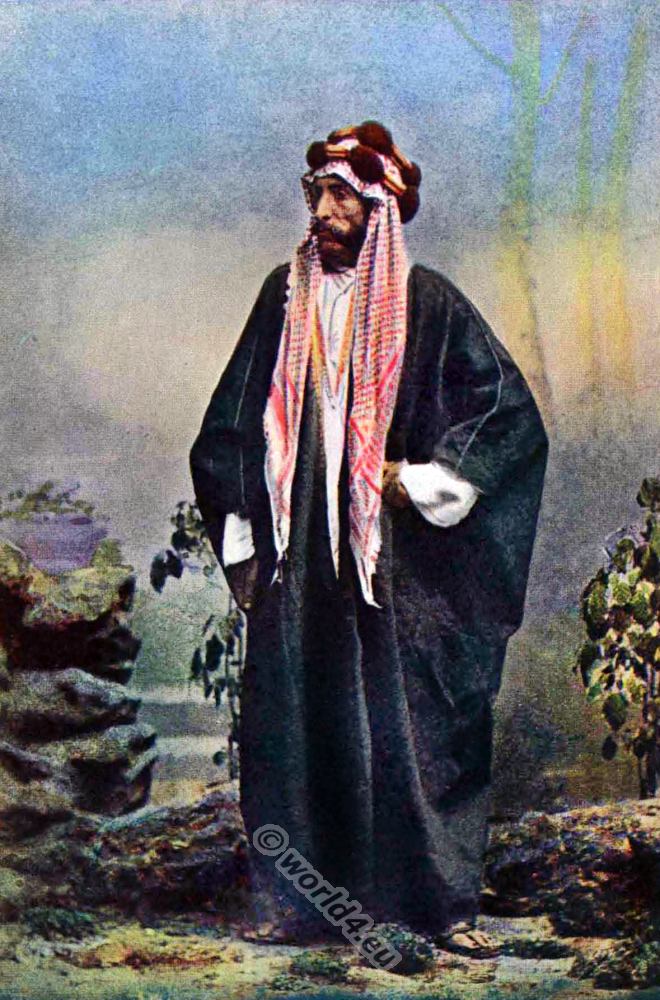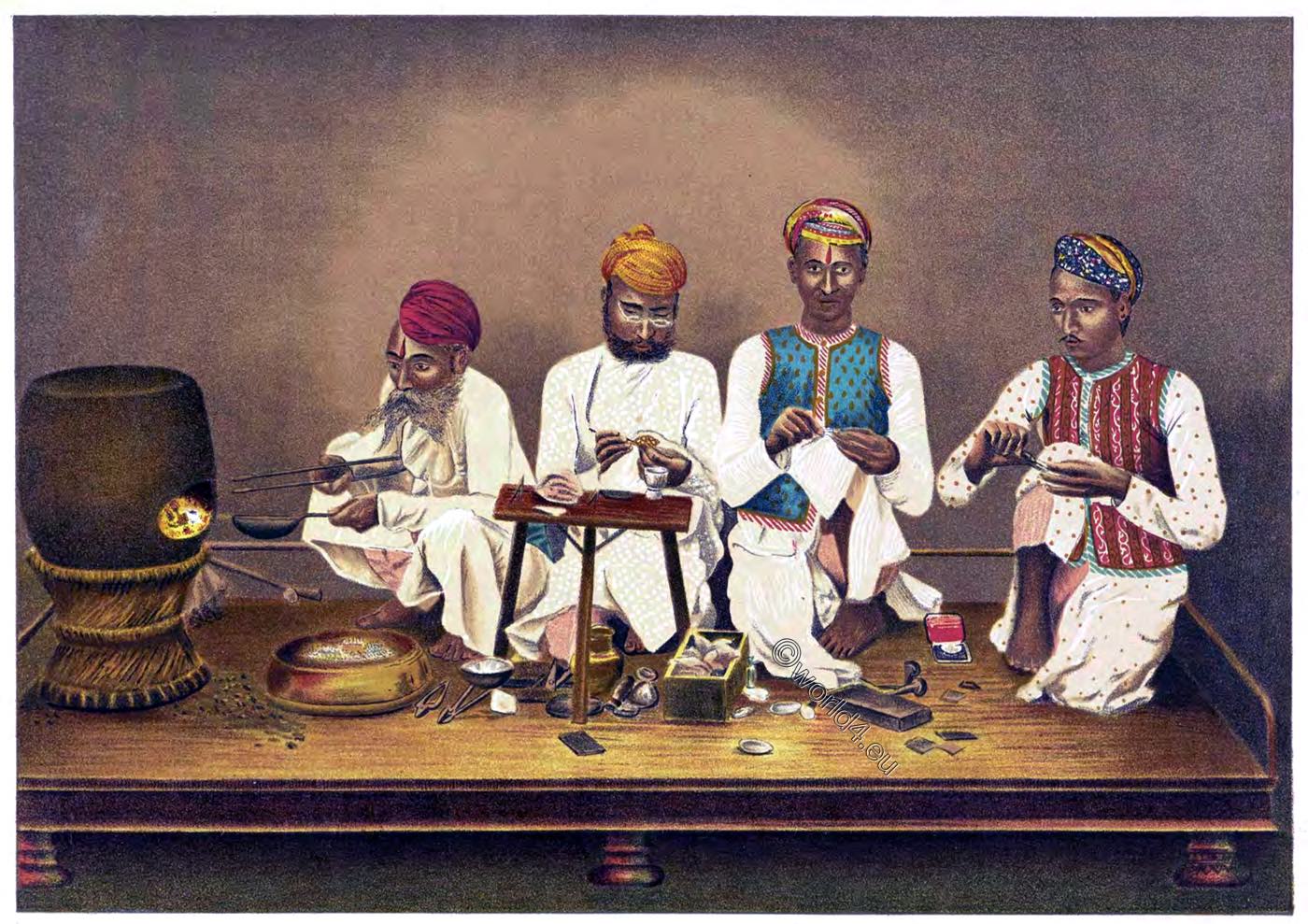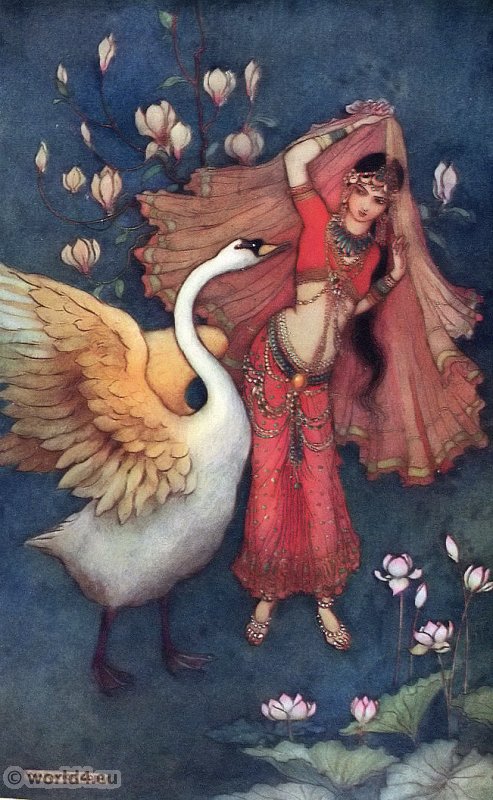SOOK NARAIN-PUNDIT, BRAHMIN.
Brown eyes, white hair, rather fair complexion, dressed in white clothes and turban, with red shawl, string of beads round his neck: height five feet six inches.
Sook Narain belongs to the class of Brahmins called Misser, who are found almost all over India. Sook Narain is a high priest, and performs religious ceremonies for those who require his services. He is a Baishnoo, namely, an especial worshipper of that god, and a Bhugut, or one that never touches animal food. He lives on the offerings made to him by the worshippers who attend his ministrations. His diet is the usual one prescribed for strict Hindus.
Brahmins of India. The two main classes.
BRAHMINS
By John Forbes Watson
The Brahmins are divided into two main classes – one , “Loukik”, or “secular”; the other, “Vaidik”, who follow sacred callings. To these a third class may be added “Bheekuk ,” or those whose sole support is begging and the alms of the charitable.
These classes are subdivided in every part of India into an infinity of sects, some of which do , and others do not, intermarry with each other. Brahmins may be considered to be divided into ten great nations, five of which belong to Northern, and five to Southern India, but there is little or no connexion between them.
The Brahmins of Northern India are held in small repute by those of the South, and vice versa. In regard to sacred professions, some are literally priests, who perform ceremonies and make offerings for other Brahmins, assisting at household offices, daily prayers, purifications, marriages, and funeral ceremonies. Others are purohits, or family priests or chaplains, not only to rich Brahmin families, but to princes of lower caste – Rajpoots or Sudras.
Such offices are for the most part hereditary. Brahmins who have attained a high degree of sanctity and learning are frequently chosen as gurus, or spiritual directors by other Brahmins, and also by lower castes.
A very large proportion of Brahmins support themselves and their families by begging, visiting wealthy persons, reading to them from Sanskrit books or more popular treatises, or from dramas, the recitation of which, with episodes from the Mahabharat and Ramayana, are fertile sources of profit. Nor do the lower classes escape.
At marriages, at funerals, at naming of children, Brahmins must be consulted, paid, and fed. Nor is any action of social life complete without them. As astrologers, they are in full occupation. Brahmins, except those connected with them as ministering priests, rarely resort to temples for their devotions, and except in fulfilment of a vow, or on public occasions, are seldom seen there. The home service is considered sufficient for all purposes of purification, and if a temple is visited, it is after the ordinary home service has been concluded.
Comparatively few Brahmins, except some of the lower degrees, are actually temple priests; and though they attend temples, and perform ceremonies, read sacred books, and offer oblations on behalf of others, they are rarely Poojaris, or, as they may be termed, temple servants. These are hereditary offices, held by persons of much lower caste, not unfrequently by Soodras. On the other hand, the Loukik, or secular Brahmins, in some instances follow agricultural pursuits; and except actually holding the plough, perform all other work.
They are also frequently bankers, money lenders, and money changers, merchants, and the like but they never descend to the rank of shopkeepers, nor engage in retail trade. They are never artisans or manufacturers. The very lowest orders among them are menial servants to the upper classes, cooks, attendants on temples, and on assemblies where Brahmins are to be feasted, for the purpose of preparing and decorating houses or courts with garlands of leaves and flowers, sweeping and watering the ground, and such like other offices. Many again, especially of the Northern Brahmins, are found in military service.
With the regulations of caste, the enforcement of caste rules and discipline, and the morality or immorality of members of castes, the Brahmins do not interfere. Such matters are the province of the caste gooroo, or instructor, or of its own priests. But the Brahmin’s ritual supremacy is absolute: herein he has no competitor, whether in the lowest or the highest castes.
Source: People Of India. Races & Tribes Of Hindustan, by J. Forbes Watson and John Willian Kaye. Originally prepared under the authority of The Goverment Of India and reproduces by Order to the Secretary of State for India in Council. London: India Museum, 1868. – A Classified and Descriptive Catalogue of the Indian Department Vienna Universal Exhibition, 1873. By John Forbes Watson, Chief Commissioner & Director, Indian Department, Vienna Exhibition, 1873.
Discover more from World4 Costume Culture History
Subscribe to get the latest posts sent to your email.


